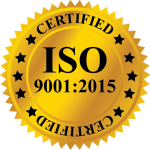Introduction – A medical device’s safety and assessment report is called a Clinical Evaluation Report (CER). It is based on clinical data from various device research and clinical investigations. A well-written clinical evaluation report outlines a methodical evaluation and analysis of all relevant clinical data to rate a medical device’s performance and safety. Clinical Evaluation is an ongoing procedure. Still, Clinical Evaluation Reports offer a “snapshot” of the findings at intervals determined by the device’s risk classification. Under the EU MDR, all medical devices must provide a Clinical Evaluation Report regardless of risk class. A CER aims to show a device’s effectiveness and safety without endangering patients or patients. CERs are necessary to introduce medical devices into the European market and secure a CE marking certificate for the proposed device. It may be sent as a technical file to the European Health Authority. A Clinical Evaluation Report (CER) documents the conclusions of a clinical evaluation and the clinical evidence for a medical device.
A CER may contain clinical data from:
- Clinical research on the device that is being assessed.
- Clinical research or additional studies published in the scientific literature are recommended for a comparable device.
- Scientific publications that have undergone peer review detail previous clinical experiences with either the technology under evaluation or a comparable one.
- Clinically significant post-market surveillance (PMS) information, focusing on pmcf (post-market clinical follow-up).
The CER shows that, when used as intended, there is enough clinical evidence to confirm the safety and effectiveness—including therapeutic benefits—of the device that is being evaluated.
Requirements for writing a Clinical Evaluation Report under the MDR
Article 61 of the MDR states that each medical device’s clinical evaluation must be recorded in a CER included in the device’s technical documentation portfolio. This need is expanded upon in MDR Annex XIV Part A, which offers comprehensive Clinical Evaluation guidelines. Specifically, the process must:
- It is based on a recorded Plan for Clinical Evaluation (CEP)
- Finds all relevant clinical evidence for the device, regardless of whether it is favorable or not; thoroughly evaluates and interprets clinical data by a prescribed process
- Determines a strategy for filling up any gaps in the portfolio of clinical evidence and draws judgments regarding the medical device’s performance and safety.
While Annex XIV Part A provides instructions on doing a clinical evaluation, it could be more specific regarding the CER’s composing standards. All that is said is that “a Clinical Evaluation Report which shall support the assessment of the conformance of the device shall document the results of the Clinical Evaluation.”
The European Commission’s advisory document MedDev 2.7/1 rev 4 “Clinical Evaluation: A guide for manufacturers and notified bodies” provides more thorough instructions on preparing CERs.
Steps to create a clinical evaluation report
- Device description, usage, regulatory background, and device classification
- An overview of your device’s clinical background and intended use.
- A comprehensive assessment and evaluation of the pertinent state of the art eventually calls for a trained medical review through systematic, recorded searches of the clinical literature and available clinical practice guidelines.
- Proof of equivalent functionality to another device or devices based on technological, biological, and/or clinical features, if relevant
- Data from nonclinical testing summarised
- An overview of the manufacturer’s clinical data, complaints, sales, and other post-market surveillance information
- A thorough evaluation of the clinical experience with your equipment (or equivalent) through methodical, recorded searches of published clinical study reports and other clinical data; this again calls for a skilled medical review.
- An overview of the usability data for devices.
- Evaluation of the quality, significance, applicability, and relevance of the data that is already accessible.
- An explanation of the criteria and procedures used to evaluate the benefit-risk ratio, safety, and clinical benefits.
- An overview of the benefit-risk analysis.
CER and Required Data Components
- Details about the medical device in general, including its maker and name
- Technical and physical specifications of the gadget and its use
- A brief explanation of the claims for therapy and diagnosis
- Data types and their clinical assessment
- An analysis and synopsis of the clinical data
- An explanation of the evaluation processes’ analyses
- Final thoughts on safety and effectiveness
Six Clinical Evaluation Report Requirements for Manufacturers of Medical Devices
Making a plan and establishing the parameters of the clinical examination is the first stage. The devices that will be the focus of the clinical evaluation report (CER) are listed in the clinical evaluation plan (CEP), along with information on their sizes, intended uses, target patient demographics, medical indications, and therapeutic benefits for patients. The following steps are finding the device’s available data and choosing a plan for a literature review.
Stage 0: Scope and plan – Make a plan for the clinical evaluation and determine the scope of the medical device and the CER report.
Stage 1: Identification of pertinent data – Determine which pre- and post-market clinical data are relevant.
Stage 2: Appraisal of pertinent data – Examine each selected data set for weight in the final report, relevance to clinical evaluation, and scientific validity.
Stage 3: Analysis of the clinical data – Conclude the device’s adherence to the fundamental safety and functional requirements. The following should be included in the data analysis:
- Profile of Benefits and Risks
- Persistent Dangers
- Questions left unanswered or uncertainties
Stage 4: Finalize the report – The evaluation report should include a summary of the data analysis following it. This report must offer compelling clinical evidence for the conformance evaluation for the device to be licensed for sale in European markets.
For European approval, medical device manufacturers must submit a CER; comparable reports are needed for other international markets. For instance, the US FDA requires medical device makers to provide yearly reports about premarket approval (PMA). The manufacturer must compile clinical data on device performance for agencies or notified organizations. The structure of an efficient CER report is similar, even though the specifics change based on the kind of device produced.
Conclusion: A Clinical Evaluation Report (CER) is a crucial document in the regulatory landscape, comprehensively assessing a medical device’s safety and effectiveness. The CER is essential for obtaining European market approval and securing a CE marking certificate based on clinical data from diverse research and investigations. It aims to demonstrate the device’s therapeutic benefits and safety when intended without compromising patient well-being. Notably, while the specifics of a CER may vary based on the type of device and the regulatory requirements of different markets, the fundamental components, such as device details, clinical assessment, and benefit-risk analysis, remain consistent. As medical device manufacturers navigate the regulatory landscape globally, adherence to a standardized and rigorous approach in creating CERs becomes imperative for successful market approvals and continued compliance. The CER, therefore, serves as a cornerstone in the regulatory process, promoting transparency, accountability, and the assurance of patient safety and device efficacy in the ever-evolving field of medical devices.










